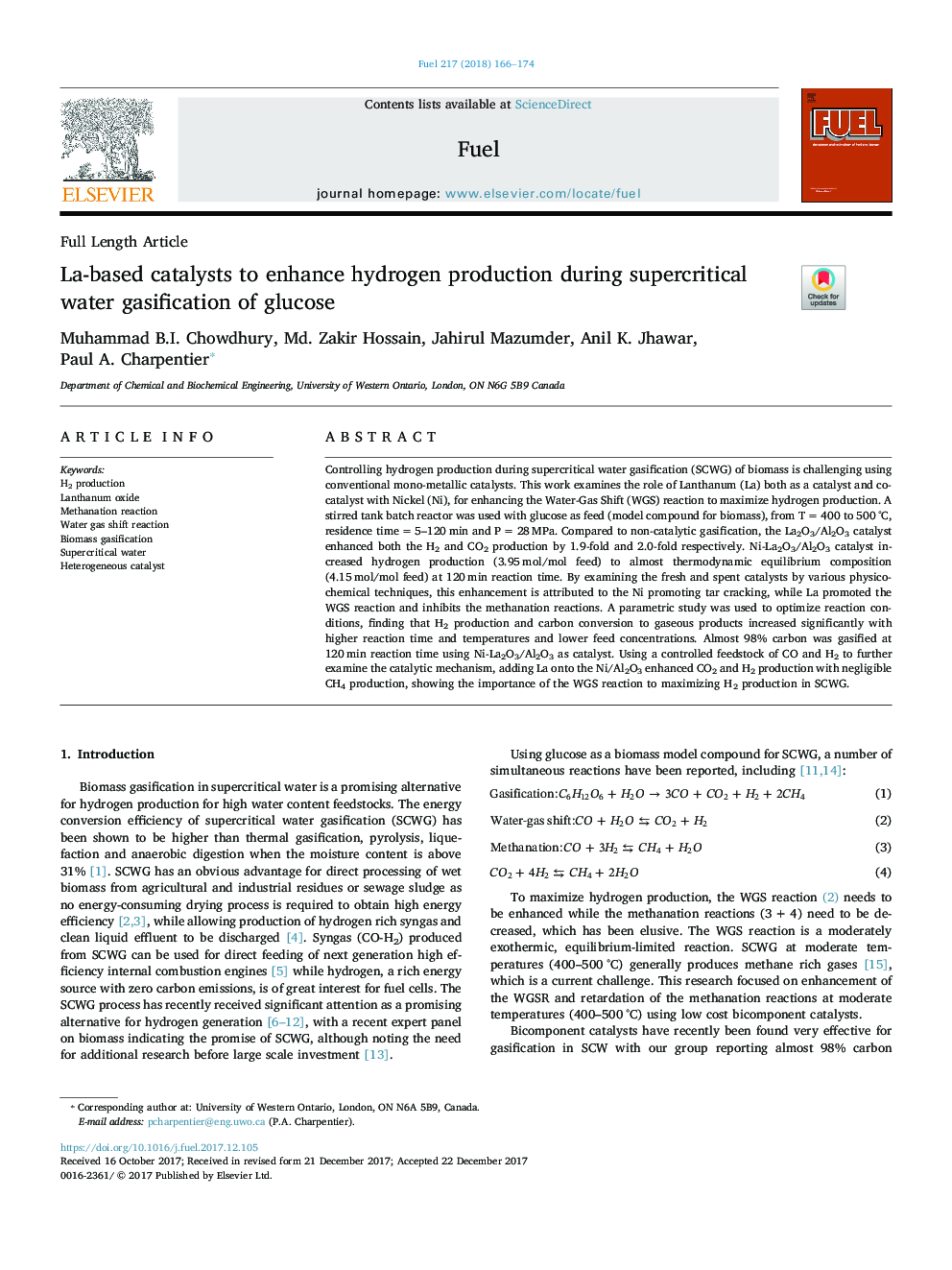| Article ID | Journal | Published Year | Pages | File Type |
|---|---|---|---|---|
| 6632001 | Fuel | 2018 | 9 Pages |
Abstract
Controlling hydrogen production during supercritical water gasification (SCWG) of biomass is challenging using conventional mono-metallic catalysts. This work examines the role of Lanthanum (La) both as a catalyst and co-catalyst with Nickel (Ni), for enhancing the Water-Gas Shift (WGS) reaction to maximize hydrogen production. A stirred tank batch reactor was used with glucose as feed (model compound for biomass), from Tâ¯=â¯400 to 500â¯Â°C, residence timeâ¯=â¯5-120â¯min and Pâ¯=â¯28â¯MPa. Compared to non-catalytic gasification, the La2O3/Al2O3 catalyst enhanced both the H2 and CO2 production by 1.9-fold and 2.0-fold respectively. Ni-La2O3/Al2O3 catalyst increased hydrogen production (3.95â¯mol/mol feed) to almost thermodynamic equilibrium composition (4.15â¯mol/mol feed) at 120â¯min reaction time. By examining the fresh and spent catalysts by various physico-chemical techniques, this enhancement is attributed to the Ni promoting tar cracking, while La promoted the WGS reaction and inhibits the methanation reactions. A parametric study was used to optimize reaction conditions, finding that H2 production and carbon conversion to gaseous products increased significantly with higher reaction time and temperatures and lower feed concentrations. Almost 98% carbon was gasified at 120â¯min reaction time using Ni-La2O3/Al2O3 as catalyst. Using a controlled feedstock of CO and H2 to further examine the catalytic mechanism, adding La onto the Ni/Al2O3 enhanced CO2 and H2 production with negligible CH4 production, showing the importance of the WGS reaction to maximizing H2 production in SCWG.
Keywords
Related Topics
Physical Sciences and Engineering
Chemical Engineering
Chemical Engineering (General)
Authors
Muhammad B.I. Chowdhury, Md. Zakir Hossain, Jahirul Mazumder, Anil K. Jhawar, Paul A. Charpentier,
